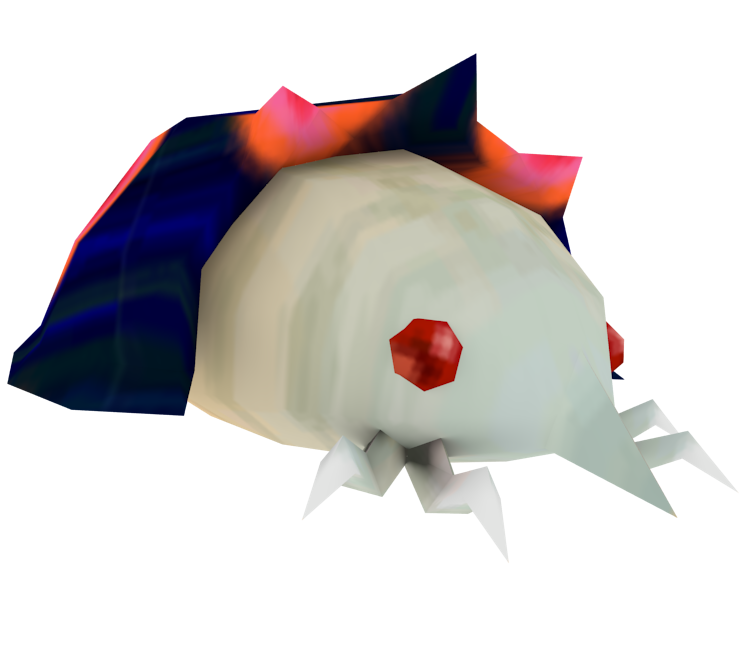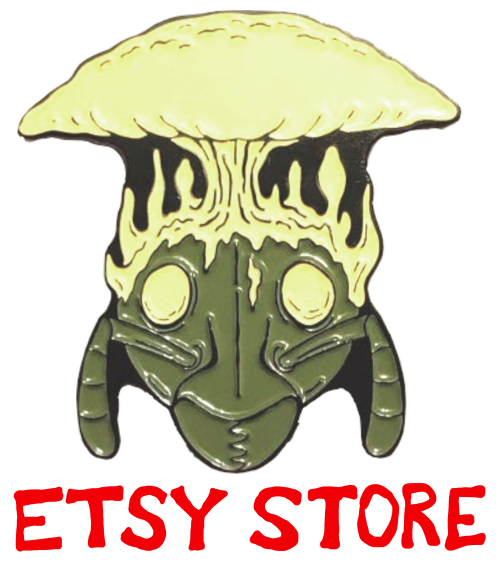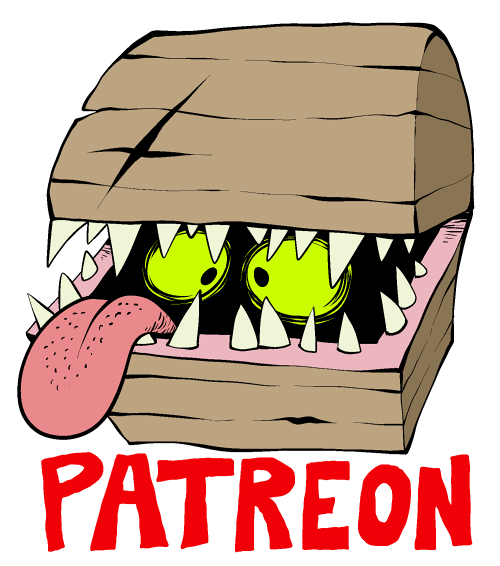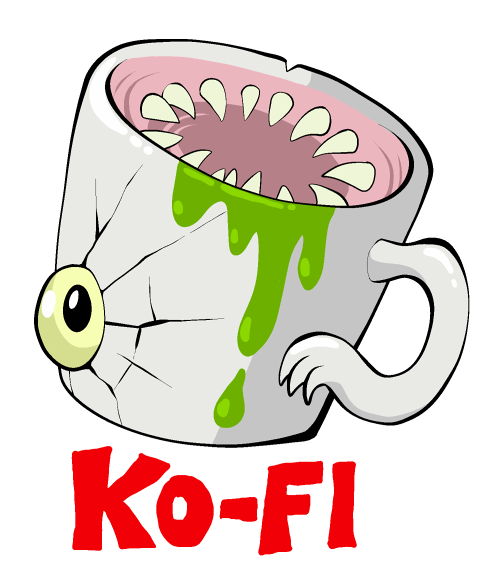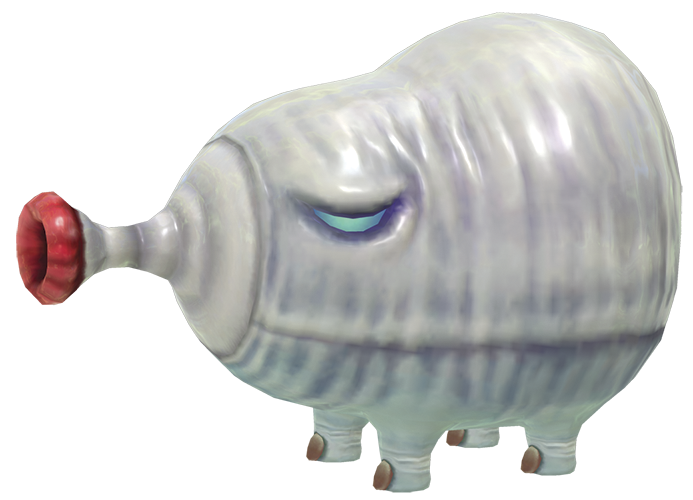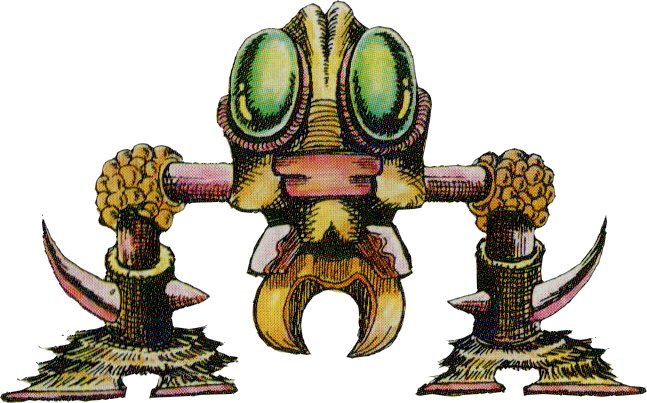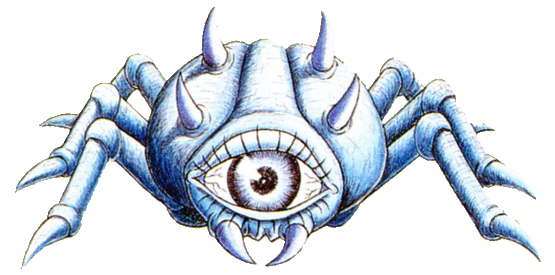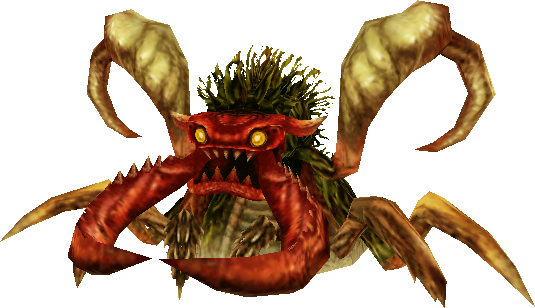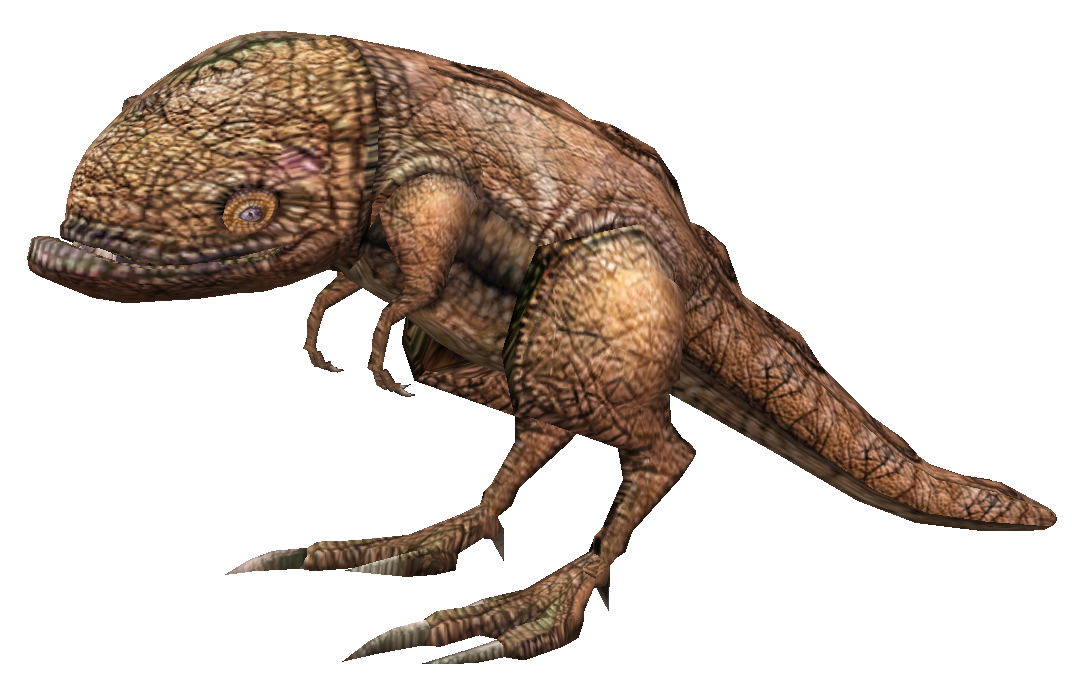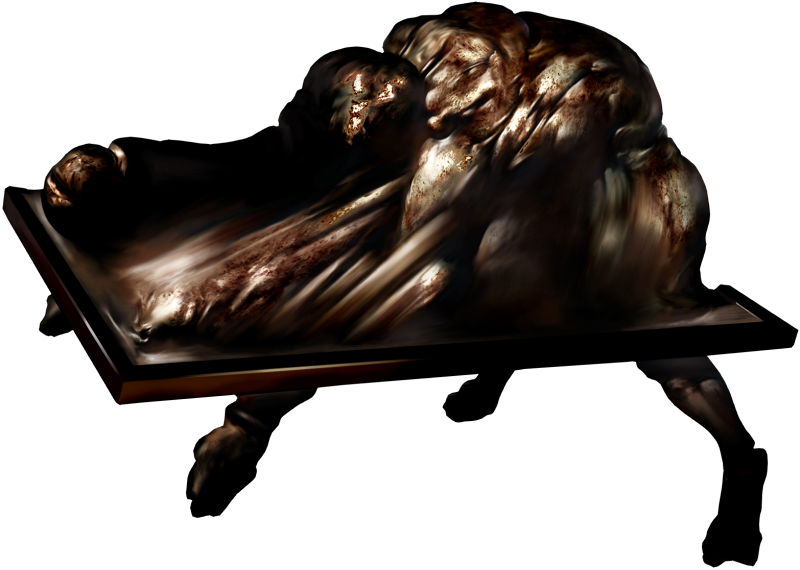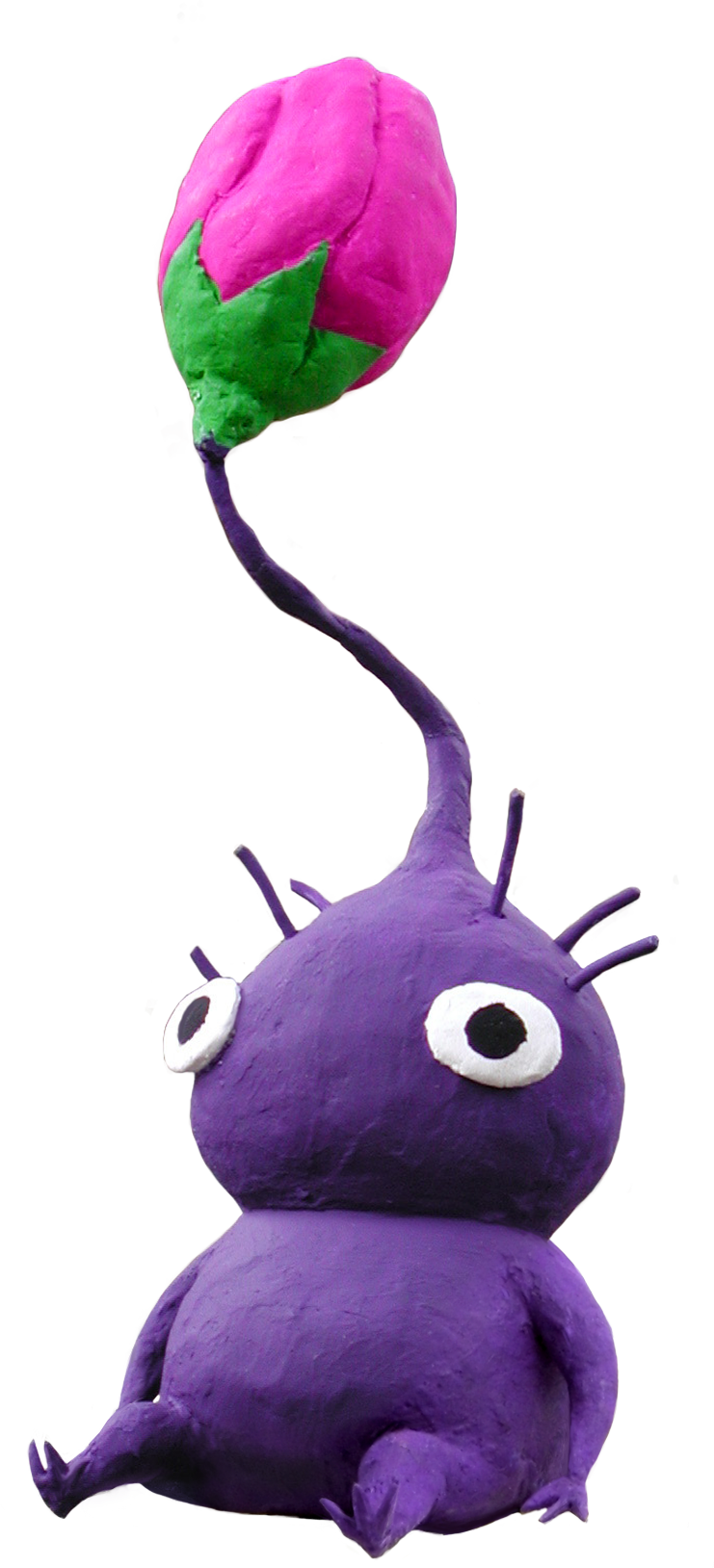
Purple Pikmin
(Pikminidae yokozunum)
The second Pikmin game featured two new Pikmin species, one of them a purple variety distinguished for being stronger, bulkier and heavier than other Pikmin, but also slower. It also has cute little "hairs" on its head!
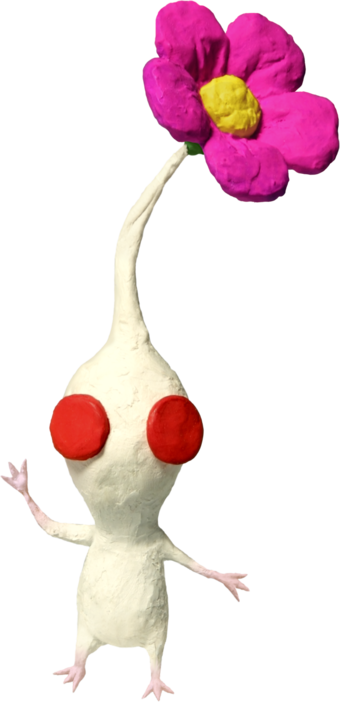
White Pikmin
(Pikminidae venalbius)
The other new Pikmin variety is my obvious favorite; subterranean white Pikmin are slightly smaller than the standard varieties, with eerie pupil-less red eyes. Not only are they troglobitic, but they're also poisonous! Pikmin are already sinister as it is, but venalbius remains one of the spookiest, in my opinion, even compared to a new variety in Pikmin 4. I do say "one" of the spookiest, because of an entry I'm saving for the end of this post.
Hairy Bulborb
(Oculus kageyamii folliculus)
This new grub-dog functions the same as the basic species, but it's adapted to colder, snowy environments, so its white coloration provides camouflage and the big poof of white hairs on its back provide insulation.
Fiery Bulblax
(Oculus vulcanis)
This large grub dog is able to light itself on fire without dying, though it does have sagging flesh as if it's constantly "melting," and its eyeballs are two wildly different sizes. Olimar's notes go into exceptional detail on this one's physiology, too: the cellular structure of its skin triggers a wax-like secretion to ignite, and its outer tissues have a spongy structure that diffuses heat to protect its internal organs. There aren't nearly enough games that ever go into biological details this specific.
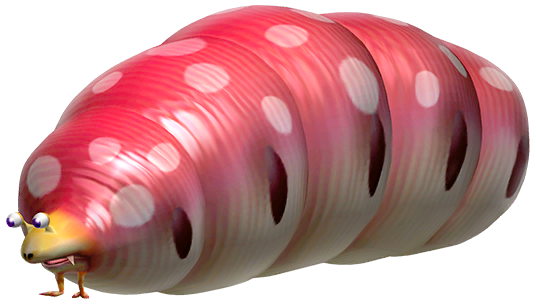
Empress Bulblax
(Oculus matriarcha)
Pikmin 2 reveals some pretty fascinating new biology for the common, basic Bulborbs: it turns out that under harsher environmental conditions, the largest local female will assert herself as an Empress, organizing others of her kind into a "pack" that adopts a eusocial lifestyle. The Empress swells into a huge queen, like a termite, and the in-game journal entry says "nearly all males not involved in species reproduction undergo natural sex changes." They don't elaborate on this last note, but it implies that females must be the designated workers, as with social Hymenoptera, while males either take on exclusively reproductive roles or become female workers. Neat!
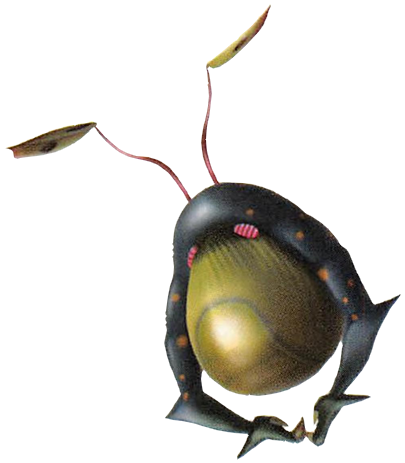
The Bumbling Snitchbug
(Scarpanica doofenia)
This is related to the Swooping Snitchbug from the first game, both considered members of the "Scarpanid" family. But while the swooping variety liked to snatch pikmin and throw them back to the ground, the bumbler likes to do this to you, the humanoid the space captain. There's still no known reason for either behavior, but it must make sense to little snitchbug brains, I guess! I love the design of this species; its body looks like a hanging yellowish bag, then it has two sad looking little pink insect eyes, then a sort of blackish helmet that extends into its two hanging arms, which are kind of shaped like human arms wearing gloves, and of course it has two antennae that it uses as wings. Its design is possibly meant to evoke a burglar, it rubs its hands together like a housefly and the game's internal data, for whatever reason, just calls it "demon" as a placeholder. It is fairly spooky looking, for sure, and it even lives deep underground. The explorer's journals only describe it as a minor annoyance, but maybe at some point they were going to be more fearful of it?
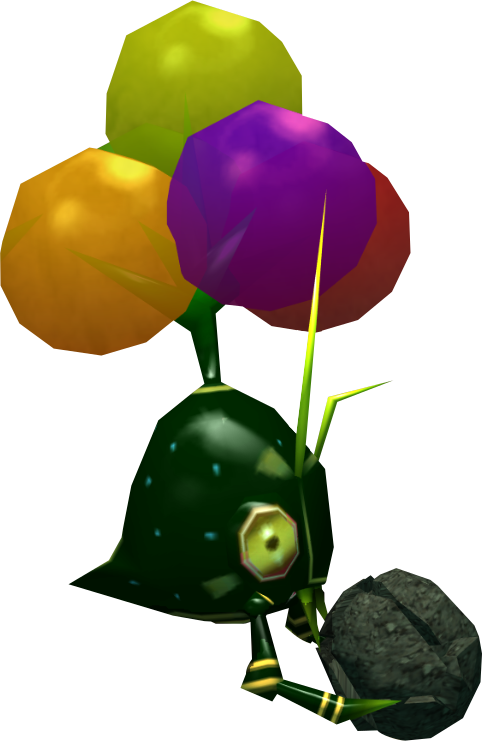
The Careening Dirigibug
(Flotillium circusmaximus)
The Dirigibug looks like it should be classified with the Snitchbugs, but it apparently belongs to its own distinct group, and Olimar even notes that it doesn't match the biology of any other species he's observed. It's an adorable thing, mostly a big green head with huge yellow gecko-like eyes, two thin green arms and two pointed antennae, not using them to fly like the snitchbugs but floating from a collection of multicolored balloon-like sacs that sprout from its top. Despite its cuteness, the Dirigibug is one of the more brutal creatures in Pikmin 2, producing stone bombs that it drops into the midst of Pikmin hordes and easily decimating them in one strike.
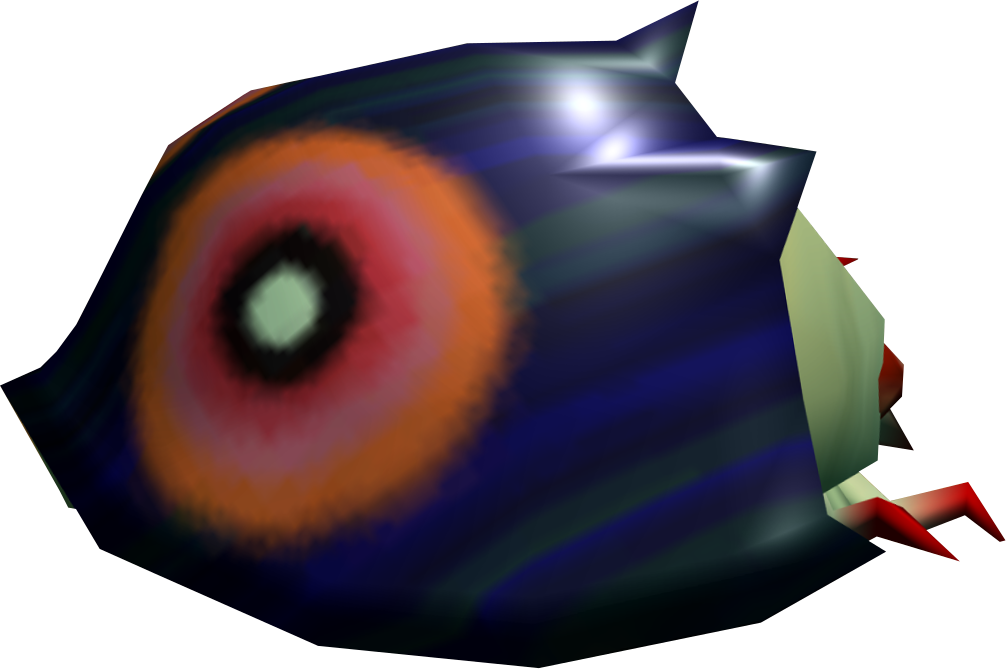
The Cloaking Burrow-nit
(Trilobitins reclusiva)
This has such a fun anatomy! It's protected by a dark blue shell with huge, red eyespots on it, so from behind, it looks like the head of a big-eyed bird or reptile. Its true body is more like a pale maggot, with two beady red eyes, four little insect legs and a tapered proboscis. This proboscis can shoot out like a harpoon, though its actual mouth is below this, just like the harpoon and mouth arrangement of most proboscis worms! (Nemerteans)

The Gatling Groink
(Megaplod calibersi)
One of the most mysterious enemies in any Pikmin game is just a bright orange ball with two long, thin legs ending in webbed feet, eyes that protrude like a car's side-view mirrors, and a cybernetic gun turret with a transparent blast shield. So it's a technologically advanced alien being? A cybernetic weapon created by something else? A biotechnological invention left behind by the planet's original inhabitants? Not only do we never know, but the explorers don't even seem to care. That's one of the funnier aspects of this series; Olimar's people may be advanced space travelers, but they take the weirdest thing at face value without question. Much of the game involves collecting "artifacts," even, which are usually everyday objects you and I would recognize, but Olimar wildly misinterprets them all.Faced with this hostile cybernetic entity, all he has to say is that its mechanical components make it an "evolutionarily advanced" species. I don't know, maybe they DID just evolve this way?
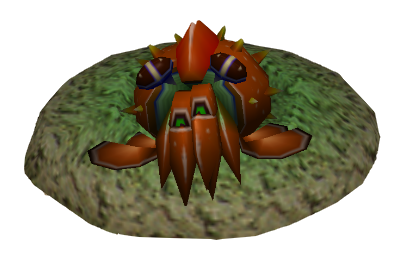
The Hermit Crawmad
(Camabarus rustica)
I've been using the most recent and up-to-date images for a lot of Pikmin creatures when they're basically the same old design, but the Hermit Crawmad actually changes a bit between its Pikmin 2 debut and Pikmin 3, so we're looking at its original design for now, which I have to say I prefer. It's actually shaped exactly like a cuttlefish if you covered it in a red crustacean exoskeleton, a cluster of crablike legs in place of its tentacles, though its eyes are specifically like those of a Stomatopod, also known as a mantis shrimp or a "squilla!" Olimar even compares it to one, but explains that it's more closely related to a hermit crab. This is odd, because he seldom ever mentions familiar Earthly animal species at all.Olimar's assistant, Louie, has his own journal entries that only advise on how to prepare and eat every species in the game. We haven't touched on his recipes yet, but he recommends dipping crawmad meat in melted chocolate. Really, Louie? Crab meat in chocolate, Louie???

The Toady Bloyster
(Molluschid minionicus)
A Gastropod! This is one of those where I'm using the model from Pikmin 3, since it doesn't feel like they changed too much. It's a charmingly broad, flat, gooey pale purple slug, with tiny colorful eyeballs on short little stalks, and "external gills," like a nudibranch, that just look literally like a small plant growing out of its back. The Bloyster feeds on Pikmin with its multiple, sticky tongues, or in Pikmin 3, a single tongue that branches. It can also defend itself by spraying ink!
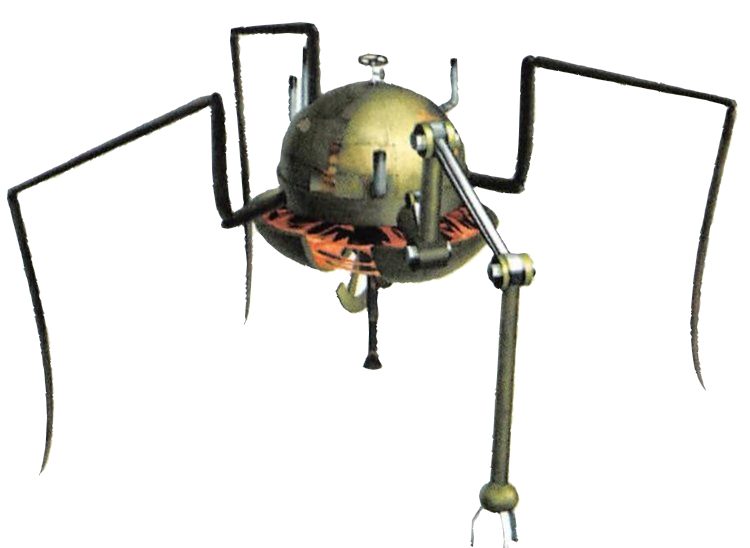
The Man-at-Legs
(Pseudoarachnia navaronia)
I said the Beady Long-legs from the first game looked mechanical, but this "related" "species" is fully robotic in appearance, until it opens up its central chassis to reveal webs of gooey, red biomaterial! Olimar claims that it "fuses with machinery at a crucial part in the maturation process," but doesn't explain what kind of machinery or from where. He goes on to say that it usually has a "gentle disposition" and no natural enemies, so he's not sure why it wields a deadly energy blaster, but that there are "rumors among scientific community that it was the machinery that approached the arachnorb and proposed the symbiotic relationship." Sure, okay.
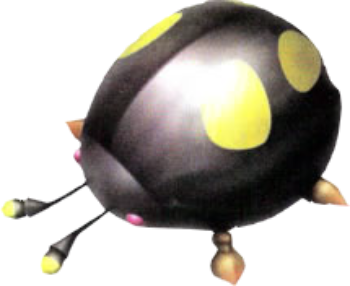
The Anode Beetle
(Scarabum electrodea)
These are another small, unaggressive beetle species, like the flint beetle, except that to adjacent anode beetles can generate an electrical barrier between them! This has the most "scientifically" detailed description Olimar gives for possibly any animal in the game, not in the sense of accuracy or plausibility per se, but it certainly has the densest technical jargon:
""This specimen is representative of an insect hybrid that uses electricity in addition to glycogen for its energy. Although difficult to confirm due to their microscopic size, tiny hairs on the creature's legs cause the friction that generates the electrical charge. The electrical charge is processed by the creature's internal machina battery structure, and then stored as a deus electrifical field. As this field reaches critical levels, surplus electricity is emitted, resulting in a low voltage current that is transmitted between specimens. It can shock other creatures in the immediate vicinity. Considering this process, it can be surmised that the largest impetus to pack behavior is not so much for synergic effect of producing as a pack as it is to take advantage of this most effective means of group preservation."
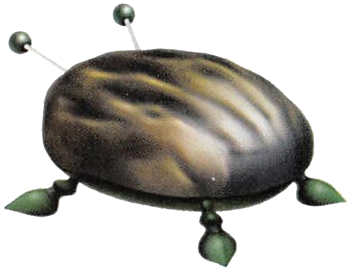
The Doodlebug
(Pilli flatularum)
This is another better-defended variation of the flint beetle, able to release a cloud of toxic gas that will kill non-poison Pikmin! Olimar explains however that this is literally the insect's flatulence, produced by the breakdown of its intestinal contents, and consists of both methane and hydrogen sulfide, which is a pretty dangerous combination. You might also think its design is supposed to look more like dung, or something, but I'd know that shape anywhere: the same texture and creasing of bloated ticks!
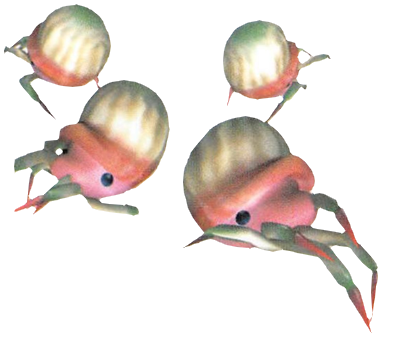
The Mitite
(Mitivius infiltratus)
One of my favorite things in the whole franchise! Mitites are absolutely darling little "mites" with pale, bulbous hat-like shells, soft little pink faces with pointed noses, tiny black eyes and long, tick-like legs, their overall shape reminding me almost of an arthropod nautilus. From their appearance and from how much I said I loved them, you shouldn't be surprised to know that they're parasites; pretty grotesque ones, at that! Olimar's notes tell us that mitites produce "pheromones" enticing the mature females of various egg-laying animal species to swallow them whole. The Mitite then implants its own eggs inside the host's developing eggs, and he doesn't get graphic enough to explain how, but they would have to have some sort of ovipositor-like appendage that could drill from the host's digestive tract to its ovaries, I'd imagine. Nothing on our world has evolved to do this, but it's still highly believable speculative parasitology!Eggs, of no particular identified species, appear in Pikmin as highly desirable items filled with delicious "nectar," but there's always a chance a swarm of Mitites will emerge instead. They're technically harmless, but Pikmin are hilarious repulsed by them and fly into an adorable little panic.
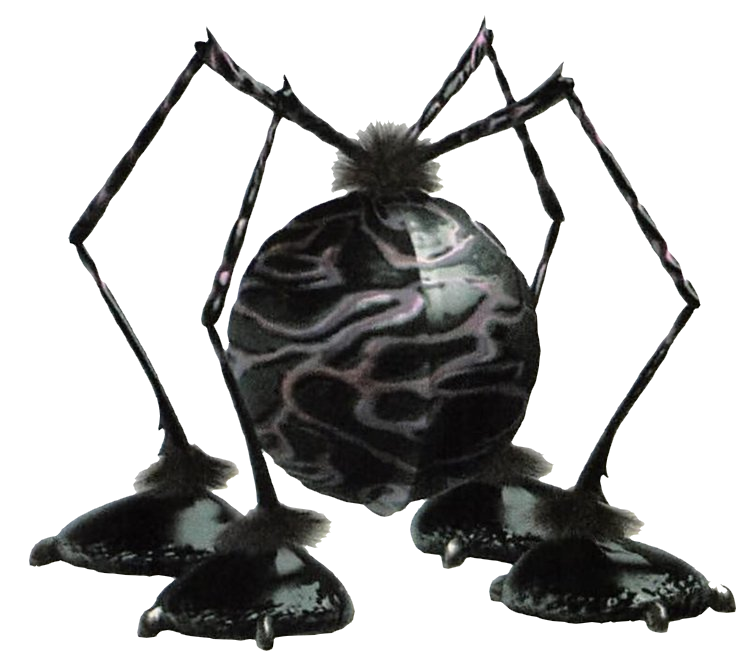
The Raging Longlegs
(Pseudoarachnia furiendis)
This is a bigger, meaner longlegs with a larger, veiny body and much broader feet, actually more organic looking than either the Man-at-legs or the first game's Beady, but still faceless and surreal. Olimar actually sheds a bit more light onto why they look so bizarre, explain that they have a "silicon-based exoskeleton and innards coated with malleable heavy metals." However, he also notes that all attempts to dissect any kind of arachnorb have caused it to explode before its innards could be fully understood. They definitely feel like some sort of leftover biotechnology.
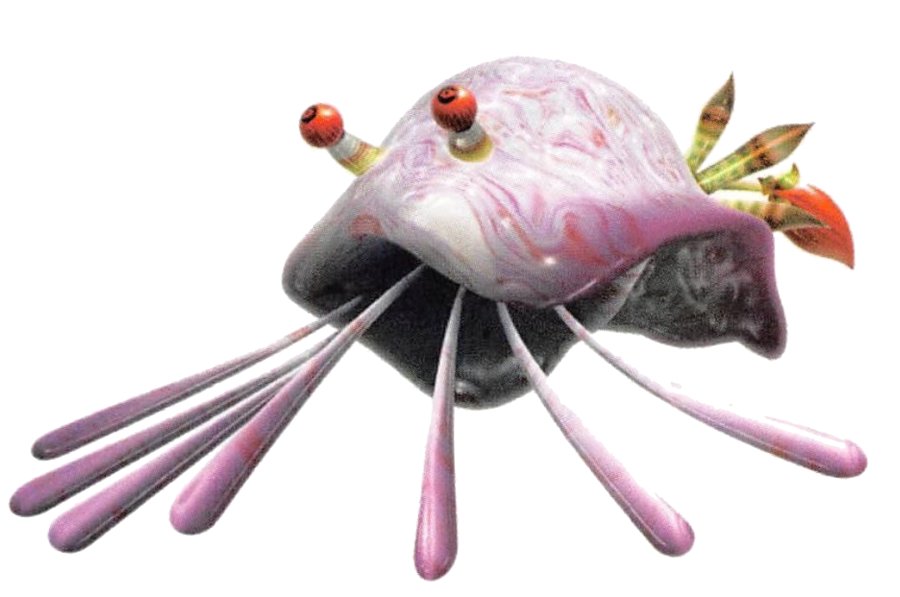
The Ranging Bloyster
(Molluschid predatoria)
This is a giant-size species of Bloyster with much longer tentacles and a smaller "plant" on its back. It's also noted as lacking a shell, and the Toady Bloyster is noted as having not yet lost its shell, but neither creature has any obvious shell in-game, unless they mean the pod on the end of the toady's flower thingy?MORE IMPORTANTLY, the leaflike gills and the eyestalks of this variation are patterned similarly to my favorite animal in the world, and I'd written a whole thing here while working on this article, speculating on what exactly this means to the Ranging Bloyster, but then it didn't save and I can't remember it anymore. You'll have to use your imagination. Maybe it's just a color pattern they put in for fun, but maybe parasitic infestation is what makes this Bloyster larger and more aggressive?
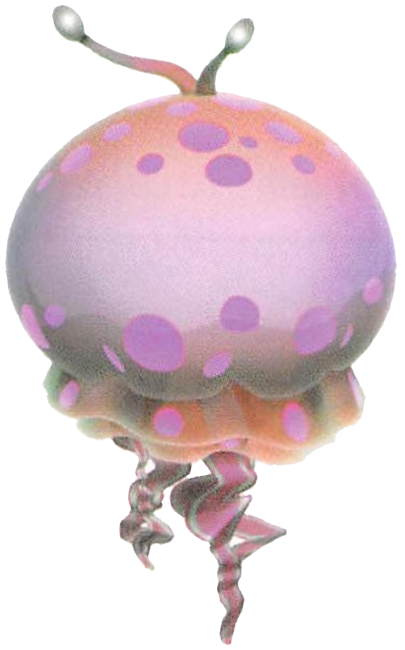
The Spotted Jellyfloats
(Cephalus dottalium and vortexia)
There are two varieties of these aerial jellyfish, but the only difference is in size and color. Both are bulbous, polka-dotted jellyfish with cute little eyestalks on top, and they feed by inhaling Pikmin and very, very slowly digesting them. I'd say that's horrible and all, but nothing in the setting is as merciless as the Pikmin themselves anyway.Cephalotus dottalium is the Lesser Spotted Jellyfloat, and is said to be native to the region. C. vortexia is the Greater Spotted Jellyfloat, which Olimar says is a more aggressive, invasive species from another region, and threatens to displace its smaller cousins.
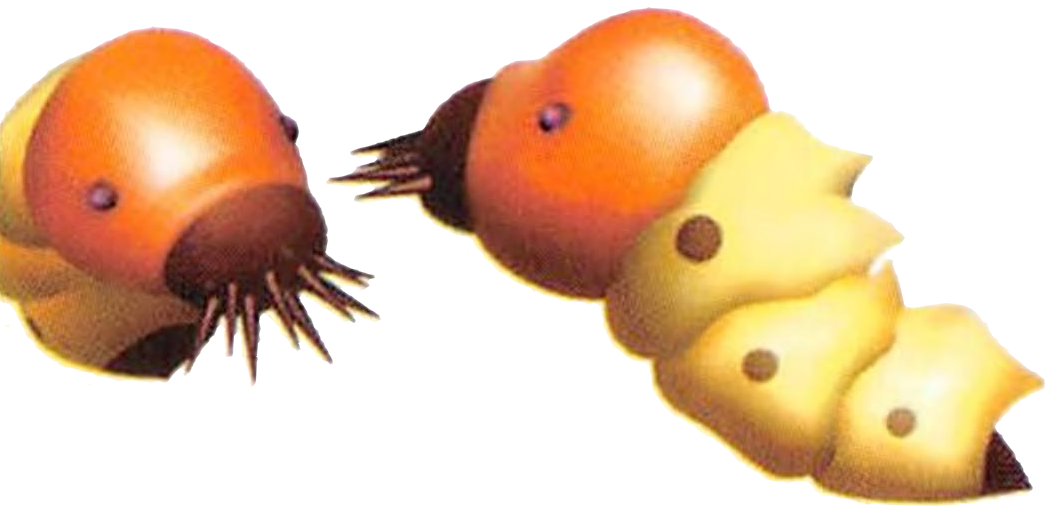
The Ravenous Whiskerpillar
(Lepidoptera pluckieus)
These little grubs have such perfect designs! A short body armored with three yellow, overlapping segments, a big round orange head with two tiny dot eyes, and a big round, black "nose" covered in little needles, its Japanese name actually just being "nose hair caterpillar." This is an interesting creature in the game because it's not a physical threat, but it will strip "spiderwort" plants of their berries, which are something you make use of. I really enjoy video game creatures that pose non-combat threats, and I wish it was much more common practice.Pikmin are natural predators of the poor Whiskerpillar, but strangely enough, they aren't actually shown ever killing them. Pikmin usually slaughter things before they carry the spoils (represented as symbolic colorful pellets, rather than graphic viscera) back to their onion-like nests, and there's even an animation of a little "soul" escaping most creatures when they die. Whiskerpillars are only "knocked out," and actually struggle the entire time they're being carried back by the Pikmin, hissing and wiggling more desperately the closer they get to the nest. Horrible.
Olimar thinks the Whiskerpillar is the larval stage of something else, but he isn't sure what!
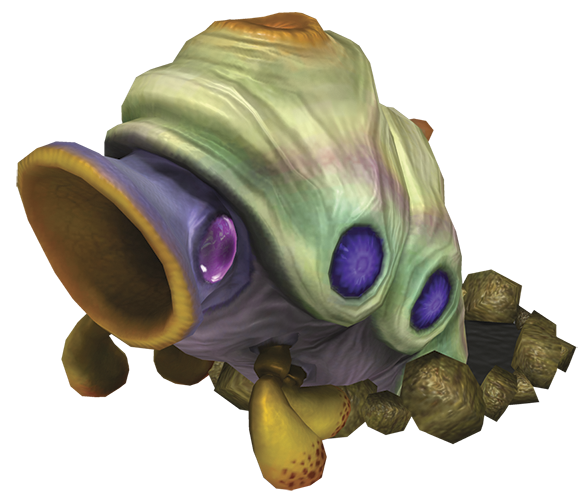
The Cannon Beetle Larva
From the second game on, we now know the larval stage of the previous game's cannon beetles. They spit explosive rocks the same way, but without inhaling air first, and they're soft all over, so their only physical defense is to hide in the soil. They're nicely designed, too, a satisfyingly compact and hunched grub, isopod-shaped, with pretty, shiny purple eyes and a large round cannon mouth. They've got cute little yellow paddle legs, too, visibly an undeveloped version of the adult beetle's rounded knob feet.
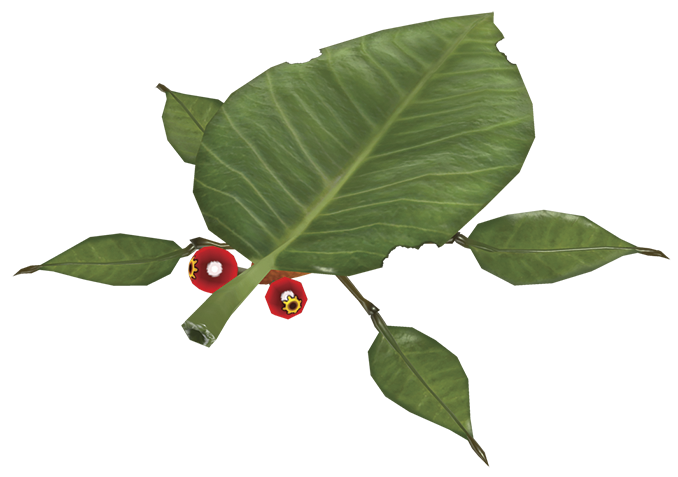
The Skitterleaf
(Rus pseudoarbicans)
This is another instance in which Olimar brings up a well known animal, stating that the Skitterleaf is actually a water strider that lost the ability to fly or skate on water. It's also a better leaf mimic than anything in nature, since its design is literally just a leaf - even "broken off" at the "stem," with four more leaves for legs. The stem is the creature's proboscis, and it has two eyes resembling red berries.If it is related to water striders, it also must have gone herbivorous; water striders are predatory, but the Skitterleaf is an unaggressive, timid animal that always runs away.
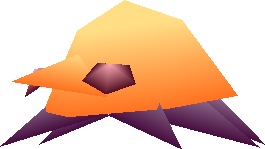
The Swarming Mites
These don't have a scientific name, or even an official English name at all, just the Japanese name Ujadani, from uja or "Swarm" and "dani," meaning mite or tick! They're little orange domes with purple eyes, a pointed snout, and simple purple spikes for legs, overall tinier than even the Mitites. An almost "secret" creature, their swarms emerge only under rare circumstances, ,and are programmed more as an environmental obstacle than a proper enemy. Pikmin will attack them with the same mechanics they use to clear away grass, and they spawn a lot of items in the process. I just know I love mites, and these are just as lovable looking as any actual mite.
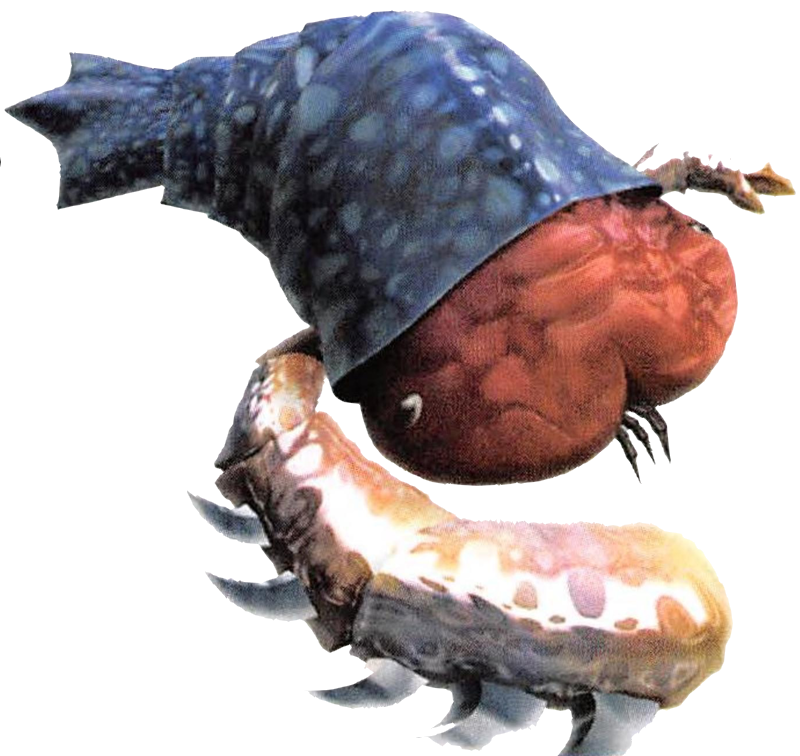
The Segmented Crawbster
(Parastacoidea reptantia)
An odd looking crustacean boss, the Crawbster looks mostly like a big blue isopod with a broad, flat red head, one tiny crab claw, and one huge clublike limb, lined with spines, which also has a metallic fish-like surface. I've called almost every single thing in this setting cute, but the tiny eyes on the sides of its big wide face are even cuter than usual. Speaking of isopods, it attacks by rolling up in a ball and trying to crush everything in its path.
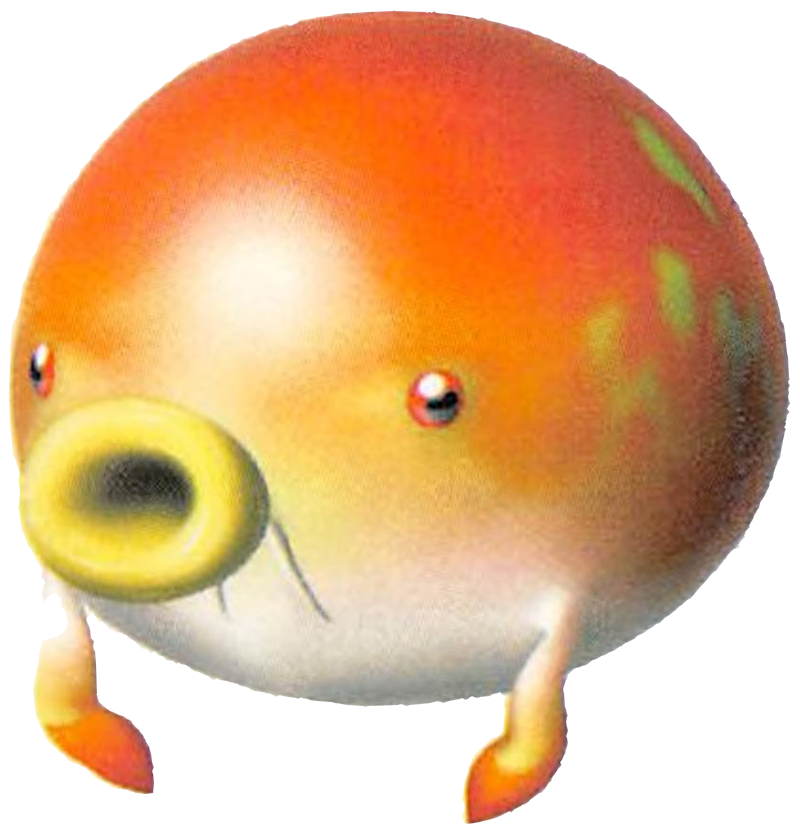
The Withering Blowhog
(Sus decrepitia)
This new Blowhog species works like the Puffy Blowhog, but it's smaller, spherical, mostly orange and lacks spines. It's so named because, while its breath can't blow things around quite as well as its larger relative, it carries a "plant hormone" that causes Pikmin flowers to instantly wilt! It also laughs every time its breath successfully knocks over a Pikmin.
The Creeping Chrysanthemum
(Taraxacum rovinia)
Surprisingly, this is one of the only instances of a carnivorous plant monster in the Pikmin world to date, other than the Pikmin themselves of course, and its biology is even compared to theirs by Olimar. It's a very fun and unique design for a plant creature, too; a large, rubbery bulb of a body with many wiggly little root legs, two flipperlike tentacles on its sides, two eyestalks that resemble yellow flowers, and a chomping,, spiny red plant-pod mouth on a longer, central stalk. It's a fairly straightforward enemy, blending with the scenery by burying itself up to the eyes and mouth, and simply tries to eat anything that comes close. It has a lot of personality however, and I appreciate that it's only a very pale green, almost primarily blue, to indicate that it lacks chlorophyll! This happens mostly to parasitic plants in our world, but T. rovinia lost its chlorophyll as it switched entirely to predation.
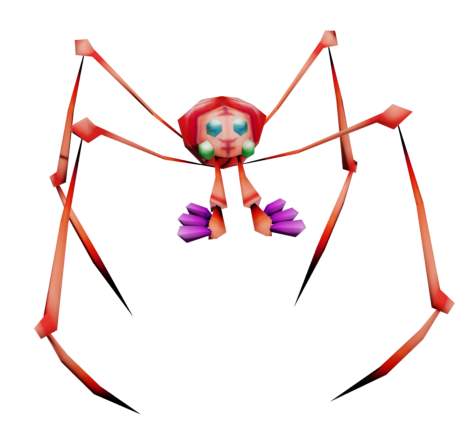
The Dweevils
There's a bunch of these, and I'm not going to list them all; all that varies is their color, and the kinds of things they like to carry on their backs as a disguise. They resemble spiders with four extra long legs and two palps with colorful fan-like growths, but their anatomy up close doesn't otherwise look like an arachnid, and they're named after weevils, which are beetles, so who knows. They're fairly prominent in Pikmin 2, but totally absent from 3.
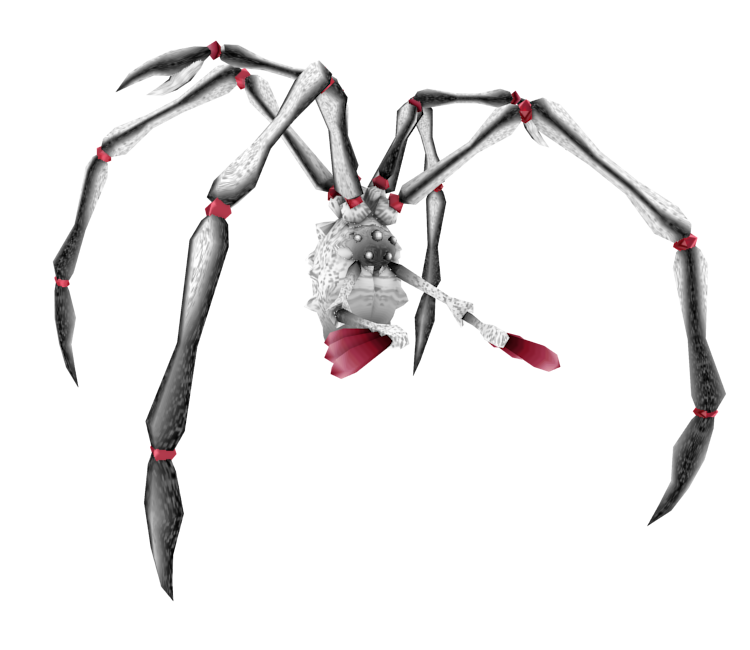
The Titan Dweevil
(Mandarachnia gargantium)
This is technically the final boss battle in the game, but not linearly; you can still fight it before some other bosses, and its defeat doesn't tie in with the end of a storyline. Both larger and more elaborate than the other Dweevils, it has six limbs including two that end in crablike pincers, and chunkier, spikier body with more eyes. It's a beautiful design, but what's most remarkable about it is that it's armed with four different mechanical weapons it can carry in its little claws, swapping them out as it battles. Each is clearly artificial, one of them even being modified from a man-made sink faucet!
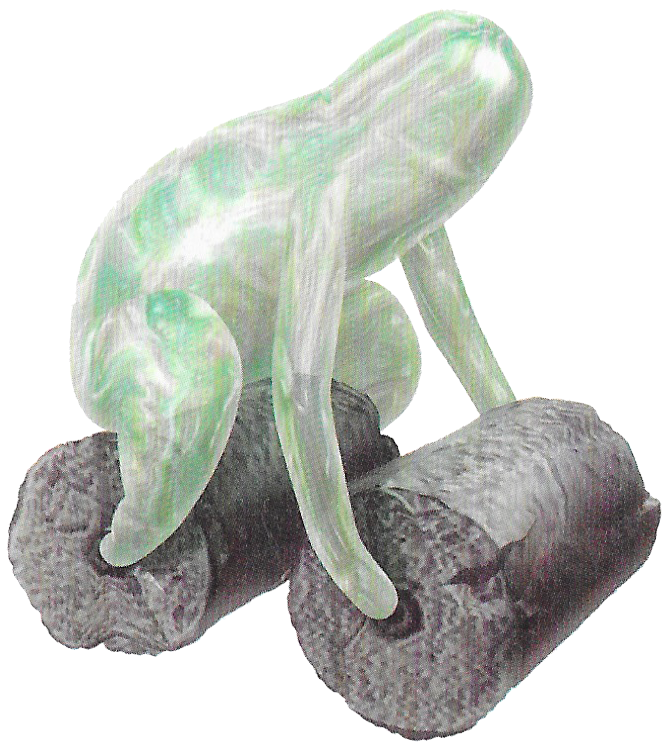
The Waterwraith
(Amphibio sapiens)
Olimar may give this boss a scientific name, but truly doesn't even know if it's a living thing at all, speculating that it's either "the ectoplasmic incarnation of a psychic phenomenon" or that its entire existence is some sort of delusion, though everyone who sees it is apparently overcome with inexplicable terror and it doesn't register on any kind of scanning equipment.Whatever it is, it manifests as a big pear-shaped mass of transparent liquid with four simple pseudopods giving it a humanoid stance, but it attacks, absurdly enough, by attaching its arms and legs to a couple of broken stone pillars and functioning exactly like a steamroller. When the pillars are destroyed, it shrinks down to a little "penguin" kind of shape and waddles around in a panic.
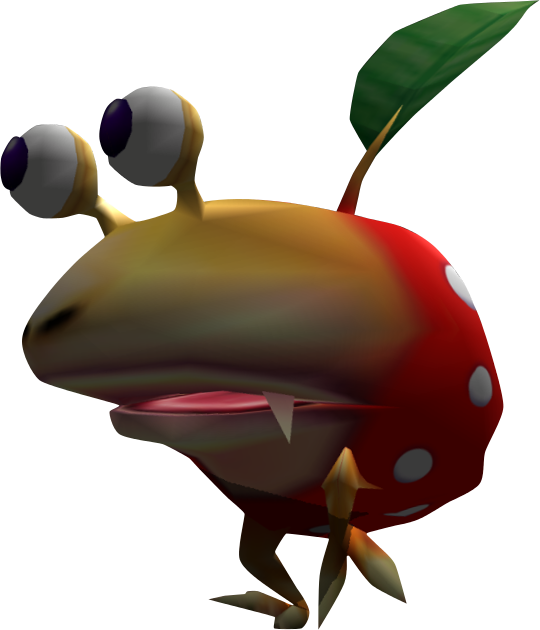
The Bulbmin
(Parasiticus pikminicus)
Some of you familiar enough with these games no dout guessed what I meant about my actual favorite Pikmin species, while the rest of you probably know what this is from the latin name alone. "Bulbmin" are Bulborbs with Pikmin-like stalks on their backs, and once the player defeats the adult, the little juveniles can be commanded exactly like Pikmin, though they're unfortunately restricted to the underground environments and can't come back with you. They are, as you either already knew or easily deduced, actually Bulborbs under the control of an endoparasitic Pikmin subspecies, which Olimar calls "loathsome" because he has no taste. In the English version, he just says they control the host with "hormones," but the Japanese version specifies that the internal Pikmin attaches its limbs to the host's ganglia and floods them with endocrine disruptors. This version also notes that they may be mutualistically beneficial, rather than parasitic, but apparently nobody's quite sure.Will we ever see them again? Maybe not the Bulbmin, per se, but one of the "bad endings" in Pikmin saw Olimar planted in the ground by his own minions, developing a Pikmin stalk on his head. Is that another instance of a parasitic Pikmin, or something else? In any case, it's not the last we've seen of the concept, because Pikmin 4 introduces a mysterious new antagonist:



